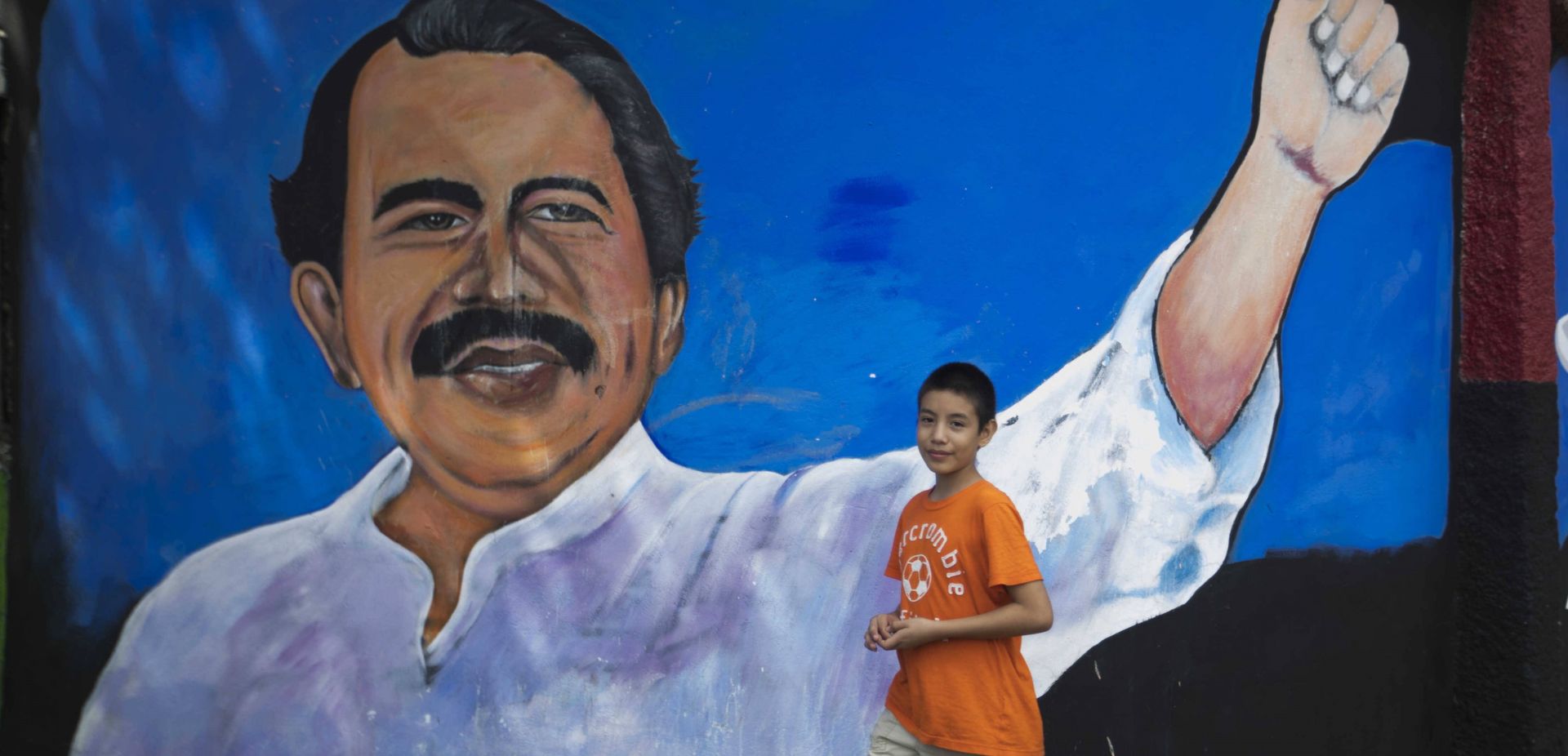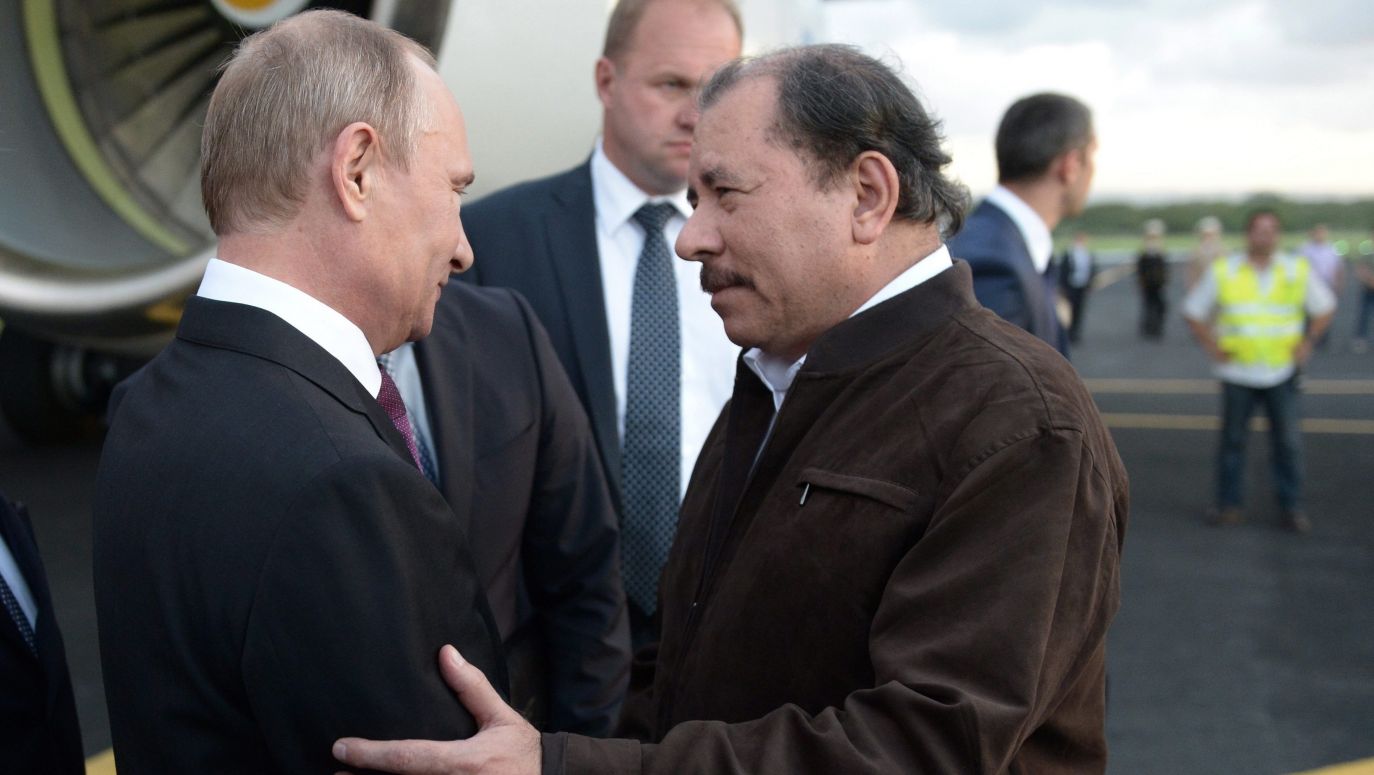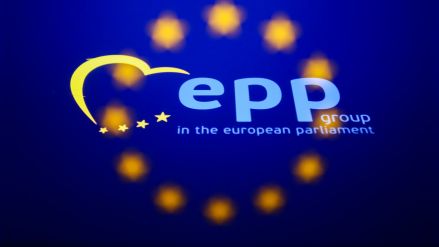War against the Church, alliance with Putin. The KGB protégé back in charge
01.03.2023
This is a story about a Marxist who lost power at the end of the Cold War and after years, got it back. This time democratically. Almost immediately he tried to dismantle the system and to rebuild his alliance with Moscow.
Nuevo Chipote and El Carmen, nearby locations in the capital of Nicaragua, Managua. Two symbols of the current governments Daniel Ortega, former pro-soviet leader of the ruling junta of Nicaragua between 1979 and 90. After years, he is back in power.
Nuevo Chipote is the capital’s prison taking its name from the infamous political prison during the times of the Sandinista dictatorship of the 1980s. Incarcerated there are chiefly politicians, journalists and clergy lately critical of the dictatorial leanings of Ortega himself.
El Carmen is the government district in the city centre. It is closely guarded, even fortified. President Daniel Ortega and his family reside there (his wife is the vice president) together with his closest aides.
His wife has been vice president since 2016. These were the first falsified elections since Ortega’s return to power. He started in every presidential election in Nicaragua since 1984. He lost three times and won five. Those in 2016 and 2021 as well as the first in 1984 had nothing much in common with democracy. But lately the Sandinista leader started to turn on the pressure.
After dealing with the political opposition, he faced up to the last two remaining bastions of freedom- the media and the Catholic Church
War against the Church
An assault against the church should not have come as a surprise. The priests and bishops were the last to publicly protest against the actions of the regime. Obscene graffiti appeared on church walls, incendiary attacks, armed attacks and the arrest of clergy and the faithful, the expulsion of priests from the country. There were trials, the closure of Catholic newspapers and the de-legalisation of catholic organisations. From 2018 to 2022, the state carried out around 400 acts of aggression against the church and the faithful. One hundred and twenty seven, last year alone.
Why this fervour? Some of the catholic hierarchy speak of terrorism during Ortega’s campaign in autumn 2021. He obviously won again and quickly started his revenge. In March 2022 he forced the Polish-born papal nuncio Archbishop Waldemar Stanisław Sommertag into leaving the country. The members of the Missionaries of Charity, founded by Mother Teresa of Calcutta were also expelled.
But the main effort came in August 2022. The police entered the bishop’s palace Matagalpa diocese and arrested Bishop Ronaldo Alvarez, a noted critic of the regime along with seven supporters. The fifty five year old bishop Alvarez was one of the most vocal of the critics of Ortega's long-time government and his wife. His sermons contained references to the breaking of civic freedoms and human rights.
When he said mass “in defence of social order” the process was condemned for exploiting social media to “organising armed bands as well as encouraging them to spread hate against the people by spreading discontent and calling for disturbances, aimed at disrupting social harmony.
For a few months it was unclear if Alvarez was in prison. It became apparent that he had been placed under house arrest. At first, Ortega announced the freeing of 222 political prisoners and their deportation to the USA. Among them was Alvarez. But he refused to board the plane to Washington, explaining that he would have to consult his other bishops at first. He was punished for this act.
The court sentenced him to 26 years’ imprisonment on November 11 2023 for “spreading false information , working to the detriment of national unity, obstructing the instructions given by the state and disobedience”. The bishop was also deprived of his Nicaraguan citizenship and landed with a hefty fine. It was the heaviest sentence meted out to any critic of Ortega’s government for some time.
Some days earlier, four priests and two seminarians were sentenced to ten years’ imprisonment for alleged treason and disinformation. They were from Alvarez’s diocese among which was father Ramiro Y Tijerino the acting rector of the John Paul II University in Matagalpa.
War against the media
2022 saw the greatest scale of repression by the communists against the church, also the worst year for media freedoms since Ortega came to power. He confiscated the licence for dozens of publications, radio and tv channels and over 120 journalists fled the country. Unsurprisingly so since many of their fellows had landed in jail themselves. Sports journalist Miguel Mendoza is such an example. Accused and sentenced in February 2022 to nine years in prison for conducting actions that were aimed at the independence of Nicaragua.
Ortega’s war against one of the oldest and most respected newspapers in Nicaragua “La Prensa” was a cause célèbre and had to export its entire output abroad. All the journalists, photographers and other employees of the editorial staff left the country in secret for fear of arrest.
A year earlier, police entered the editorial offices and the then editor Juna Lorenzo Holmann was sentenced to prison in March 2022 on charges of money laundering.
A few months later, Rosario Murillo the vice president and Ortega’s wife declared that the newspaper’s premises would be taken over by the state and converted into a cultural centre.
In September 2022 the Hispanic broadcasting channel of CNN was deprived of its right to broadcast - it was the last independent television channel. Tee broadcast was interrupted just as it broadcast Ukrainian president Volodymyr Zelenskyy during his speech to the UN General Assembly. Zelenskyy pointed out that Ortega’s regime as one of the seven countries that voted to prevented him voting in the UN
The liquidation of democracy
The last steps of an authoritarian country that wanted to preserve the trappings of democracy was to destroy the remnants of free media and to brutally silence the catholic church. Key to this were the presidential and parliamentary elections in autumn of 2021. Ortega imprisoned his rivals before the election campaign got under way. In the 90-member national assembly, 76 seats were taken by the presidential FSLN (National Sandinista Liberation Front). Ortega himself was re-elected with 76 percent of the votes.
It was possible to vote in the election not just for Ortega himself but for five of his rivals. But they all originated in small parties that were co-operative with the regime. The so-called elections were conducted without international supervision and almost without the presence of the international media. The icing on the cake in building the dictatorship were the local elections in November 2022. Out of 153 electoral districts, the state candidates won in 141 from the FSLN.
Open warfare with the church began in the autumn of 2021, before the parliamentary elections. Ortega accused Catholic bishops of Nicaragua with acting “in the name of terrorists”. He suggested that they acted in the “name of imperialism (USA)” and they were “terrorists by association.”
Ortega’s opponents were arraigned in kangaroo courts for “crimes against the fatherland” “treason against the nation” “organising a coup “ as well as “ money laundering”
Ortega’s Nicaragua resembled that of Anastasio Somoza, against whom the Sandinistas once struggled. From 2016 the vice president was the first lady, Rosario Murillo. Ortega’s family have taken over most of the media and are hugely influential in the business sphere. The eldest son, Rafael Antonio Ortega Murillo controls the television.
The presidential pair have nine children in total (three from the vice president’s first marriage). Eight have official status as presidential advisors.
So how did a former communist leader return to power and build up a dictatorship for the second time, exploiting democratic tools?
The long march of the Sandinistas
When Danial Ortega after eleven years of rule and president since 1984, lost much to his surprise against the opposition candidate Violetta Chamorro, he laid emphasis on organic work and the rebuilding of his power base. As formal head of the FSLN he took full control over the party, marginalizing old Sandinista comrades. Next, he formed an alliance with president Arnoldo Alemán (1997-2002) who according to anecdote “stole faster than under Somoza”.
Both benefited from this partnership. Ortega’s people backed Alemán in parliament against accusations of corruption. In exchange, Ortega was supported by the Liberal Alliance led by Alemán in the presidential elections. Additionally, the Sandinista leader sought an understanding from a contact in the communist era, namely Cardinal Miguel Obando y Bravo.
So in 2006 the former leader of a marxist regime returned to presidential office in full democratic manner ushered into power by his former foes, the church hierarchy, big business and part of the liberal opposition. He became president after having secured only 38 percent of the vote. Two rivals polled even less 29 and 26 percent . In Nicaragua there is no second ballot, and winning over 50 percent is not necessary. The dictator started to introduce similar actions in the country as he did in the party.
He patiently worked to gain control over the army and police. Democracy was progressively eroded with each victorious election in 2011 and 2016. Ortega’s grip on power increased. A favourable economic climate did help. It paid the Sandinistas to convert from communism to capitalism.
Society reacted radically to the growing power of the president. Crowds came out onto the streets in 2018. The protests were violently quelled by the police and army. Around 30 demonstrators were killed. Some opposition organisations spoke of around 650 deaths. After this successful societal revolt Ortega dropped all pretences.
Ortega: the new system
Today the FSLN controls the streets with the support of paramilitary groups armed by the army and police. Ortega used the Russian model. He introduced legislation that forbad non- government organisations from obtaining foreign funding. He forced individuals connected with such organisations to register themselves as “foreign agents” which blocks them from entering political life. The authorities also delegalized further opposition groups.
The National Assembly, dominated by the Sandinistas, amended the constitution two years ago that punished acts of “hate crime” by life imprisonment.
How do you define a hate crime? They are linked with anti-state activity. The new legislation enables Ortega to hit the opposition before the autumnal elections in 2021.
Changes were introduced that reduced the scope of engagement of the citizen in the election campaign. Then, a Election Tribunal was called, composed of Ortega supporters. Foreign observers were curtailed and seven main opposition candidates were arrested- the daughter of the former president Violeta Barrios de Chamorro (1990-1997) the person to whom Ortega would have had to give power to. Also, Dora Maria Tellez, legendary “Commandante 2’ who in 1978 being just 22 years old led a spectacular coup de main against the parliament. She had broken with Ortega in 1995. In February 2022 she was sentenced to eight years in prison.
Moscow and Havana
In 1978 Tellez and Ortega were still comrades. They were supported by Soviet intelligence. Ortega was the leader of the Insurrectionary Fraction (tercerista) in the FSLN. This group had undertaken the actions mentioned above in 1978. A partisan unit disguised as National Guardsmen took over parliament on Managua, taking the members hostage.
Somoza had to fulfill their demands. He paid a high ransom and freed 59 Sandinista prisoners. The terrorists together with their freed comrades peacefully left for Cuba. The KGB files in the Mitrokhin Archive recorded that Soviet intelligence had helped to plan and support the action. In particular the Department VIII ( Special Operations) formed the SI (Illegal) executive of the KGB chief directorate.
But the Cubans were the main supporters of the Sandinistas. Under Cuban pressure the three factions of the FSLN, the Insurrectionary Fraction, Proletarian and Long National Struggle fractions, signed an understanding. Cuban intelligence supported the Sandinistas establishing a base in Costa Rica where they prepared offensives against Somoza. In 1979 they entered Nicaragua. The CIA assured the White House that the offensive would be unsuccessful. But the speed and ease in which Somoza authority crumbled surprised both the American and Russian services. The Sandinistas entered Managua on July 19, 1979.
Nikolai Leonov, the KGB specialist for Latin America appeared in Nicaragua in October of that year. He had secret conversations with Sandinista leaders, Humbert and Daniel Ortega and Tomas Borg. So what do we know of these talks thanks to the reports revealed by Leonov? Ortega regarded the USSR as “a class and strategic ally and the Soviet experience in building the country and party was the paradigm necessary to emulate and imitate wherever practical in Nicaragua”.
Ortega agreed to unofficial contacts with KGB representatives in order to facilitate the exchange of information. He showed Leonov a secret document on the subject of the political plans of the FSLN. He condemned “American imperialism” and foresaw the FSLN’s transition into a marxist-leninist “party of the vanguard” that in alliance with Cuba and the Soviet bloc would conduct “class war” not only in Nicaragua but in the whole of Central America.
In November 1981 Nicaragua signed a defence pact with Moscow. Within a few years the EPS, the Sandinista Peoples’ Army became the hundred thousand strong, largest army in Central America. But fear in the face of the newly-elected US president Ronald Reagan ensured that Moscow did not arm Nicaragua to the same degree as Cuba.
It was clear that neither the Soviets nor Castro would not be able to defend the Sandinistas in the face of an American attack. If Ortega held out any hope this was dashed during his visit to Moscow in March 1983. He had to comply with Yuri Andropov’s declaration that “the revolutionary government in Nicaragua had all the necessary means to defend the country”.
Six months later , the Americans overthrew the marxist regime in Grenada. Ortega and the KGB feared that Nicaragua was next. The Soviets did not wish to provoke the USA. The Sandinistas for this reason never received the Mig 21 jet squadrons that they had been promised in 1981.
Meanwhile the USSR government was taken over by Mikhail Gorbachev who had no intention of subsidising Ortega’s regime. Moreover, the Soviets stated that the social support for the Sandinistas would be waning and that they should look for other resources to politically resolve their problems. Under the terms of the peace plan hammered out with Oscar Sanchez the Costa Rican president, the Sandinistas agreed to international supervision of its elections. They were convinced that they would win anyway. But in February 1990 they lost to a wide coalition of opposition parties.
Tanks from Putin
When Ortega returned to power in 2007 he immediately turned to Russia. Vladimir Putin was in the Kremlin and rebuilding its influence throughout the world. Moscow used the opportunity to find after Cuba and Venezuela a sympathetic country against the USA.







